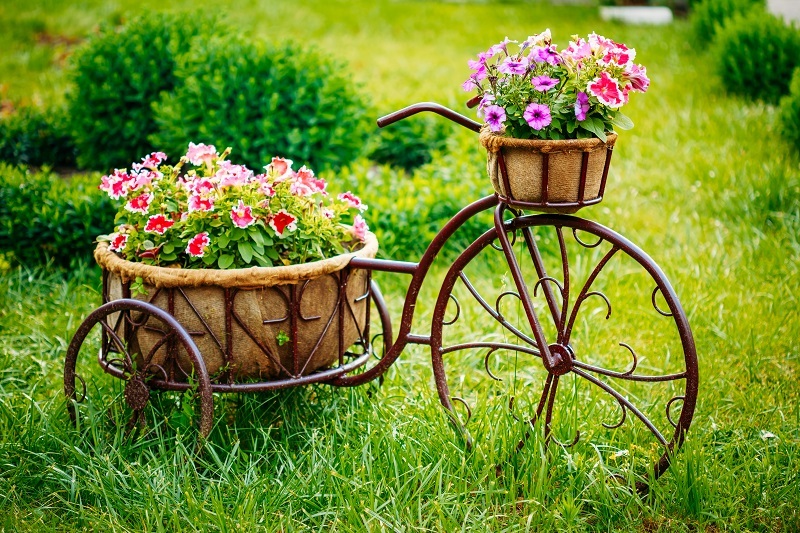Marvel at 8 Unbelievable Facts About Sunflowers
Posted on 22/08/2025
Marvel at 8 Unbelievable Facts About Sunflowers
Sunflowers are some of the most recognizable and beloved plants on the planet. Their towering stalks, golden petals, and striking faces that track the sun make them a marvel of the natural world. Yet, beneath their cheerful exteriors lie surprising secrets and fascinating characteristics. Join us as we explore eight unbelievable sunflower facts that will leave you in awe!

1. Sunflowers Exhibit Heliotropism - They Follow the Sun
One of the most iconic features of the sunflower is its remarkable ability to "follow" the sun, a phenomenon known as heliotropism. This behavior is most prominent in young sunflowers, whose heads turn to track the sun from east to west during the day, maximizing photosynthesis. This not only boosts their growth but also warms the flower to attract pollinators.
- Young sunflowers face east at dawn and follow the sun until sunset.
- Mature sunflowers usually face east permanently, ceasing their tracking behavior after full bloom.
- This eastward-facing orientation helps attract pollinators like bees, as the flowers warm up faster and offer a more enticing landing spot.
Heliotropism is a fascinating adaptation, and its underlying mechanism involves changes in turgor pressure within the stem, driven by blue-light receptors in the plant. As the sun moves, one side of the stem lengthens, causing the head to turn in that direction.
2. Sunflowers are Not a Single Flower
At first glance, a sunflower seems to be a singular, large flower. But here's a mind-blowing sunflower fact: each sunflower head is actually composed of thousands of tiny flowers, called florets!
- The large yellow "petals" you see around the rim? Those are ray florets, which are sterile and serve only to attract pollinators.
- The dark center is packed with disk florets, which are fertile and develop into seeds.
- A single mature sunflower can contain up to 2,000 individual florets!
This composite flower structure is typical of the sunflower family (Asteraceae). It enables the plant to efficiently maximize reproduction and seed production, making sunflowers an important agricultural crop worldwide.
3. Sunflowers Can Grow to Tremendous Heights
Sunflowers have a reputation for being tall, but just how tall can they grow? Some varieties can reach astonishing heights, truly living up to their name as giants of the plant world.
- The tallest sunflower on record reached a height of 30 feet 1 inch (9.17 meters) and was grown by Hans-Peter Schiffer in Germany in 2014.
- Typical garden sunflowers (Helianthus annuus) reach heights of 6-10 feet, but giant varieties can easily surpass 15 feet!
- These towering plants are supported by strong, fibrous stems and deep root systems.
Sunflowers' impressive height also has ecological benefits, helping them rise above competing plants and giving pollinators a clear beacon from afar. Gardeners worldwide often compete to break records, planting special giant sunflower varieties each year.
4. Sunflower Seeds Are Nutritional Powerhouses
When you think of sunflowers, you probably imagine their seeds as tasty snacks. But did you know that sunflower seeds are packed with nutrients?
- High in protein: Just a handful of sunflower seeds can provide a significant boost of protein.
- Rich in healthy fats: Especially unsaturated fats, which are good for heart health.
- Loaded with vitamins and minerals: Vitamin E, B vitamins, magnesium, selenium, and zinc are all abundant in sunflower seeds.
- Sunflower oil, derived from the seeds, is one of the most popular and versatile cooking oils worldwide.
Including sunflower seeds in your diet can help lower cholesterol, support bone health, and boost your immune system. It's no wonder that sunflower seeds are staples everywhere from sports stadiums to health food stores!
5. Sunflowers Played a Crucial Role in Space Travel
Here's a sunflower fact that's out of this world: sunflowers have gone to space! In 2012, astronaut Don Pettit grew sunflowers aboard the International Space Station (ISS).
- Pettit took sunflower seeds to the ISS as part of an experiment to study plant growth in microgravity.
- He managed to document the entire growth process, sharing images online and sparking excitement among plant lovers and scientists alike.
- These experiments help us understand how plants might be grown for food and air purification on long-term space missions.
This cosmic journey was just one example of the sunflower's scientific importance. Their hardiness, quick growth, and impressive adaptability make sunflowers perfect subjects for studying how life can flourish beyond Earth.
6. Sunflowers Can Aid in Environmental Cleanup
Did you know that sunflowers can help clean up toxic waste? This incredible process is called phytoremediation.
- Sunflowers were used at sites affected by nuclear disasters, including Chernobyl and Fukushima, to extract toxic elements like lead, arsenic, and radioactive isotopes from the soil.
- The roots absorb contaminants and store them in the plant tissues, reducing pollution in the environment.
- This method is cost-effective, eco-friendly, and visually pleasing compared to traditional cleanup efforts.
As a result, the sunflower is often called a superhero of the plant world for its unique ability to heal damaged landscapes. The next time you see a sunflower field, remember - those bright faces may be hard at work restoring the planet!
7. Sunflowers Have Deep Cultural and Historical Symbolism
The sunflower is much more than just a beautiful bloom. Across the world, it has become a powerful symbol in history and culture.
- Native Americans: Indigenous peoples of North America were one of the first to cultivate sunflowers. They used every part of the plant - for food, oil, dye, and medicinal purposes.
- Vincent van Gogh: The artist's world-famous sunflower paintings (Les Tournesols) helped elevate the flower's status to global fame. Many view the sunflower as a symbol of happiness, hope, and creativity.
- Modern meanings: Today, sunflowers often symbolize adoration, loyalty, and longevity due to their constant turning toward the sun and impressive lifespan.
- The sunflower is even the national flower of Ukraine, symbolizing peace and resilience during difficult times.
With its golden head held high, the sunflower inspires people around the globe. It appears frequently in art, literature, and celebrations, serving as a reminder of the enduring human connection to nature's wonders.
8. Sunflowers Feature Intricate Mathematical Patterns
Perhaps the most astonishing fact about sunflowers is hidden in their spiral arrangement.
- Fibonacci sequence: The seeds in a sunflower head follow a precise mathematical pattern known as the Fibonacci sequence, a series where each number is the sum of the two preceding numbers (1, 1, 2, 3, 5, 8, 13, and so on).
- The typical sunflower displays 34 spirals in one direction and 55 in the other - both Fibonacci numbers!
- This unique arrangement maximizes the number of seeds that can fit in the flower head, ensuring optimal reproduction and efficient packing.
The mathematical beauty of sunflowers has captured the attention of botanists, mathematicians, and artists for centuries. Their seed patterns have inspired studies in fields as diverse as computer programming, architecture, and design.

Frequently Asked Questions About Sunflowers
What are some benefits of growing sunflowers in your garden?
- They attract pollinators like bees and butterflies.
- Sunflowers can help shade smaller plants from intense sunlight.
- They improve soil health by drawing up nutrients with their deep roots.
- Sunflower seeds can be harvested for healthy snacks or bird feed.
How do you care for sunflowers?
- Plant them in a sunny spot with well-drained soil.
- Water regularly, especially during dry spells, but avoid overwatering.
- Support tall varieties with stakes to prevent them from toppling.
- Harvest seeds when the back of the sunflower head turns brown and the seeds appear plump.
Are there different types of sunflowers?
Yes! Beyond the classic yellow, sunflowers come in a spectrum of colors, including red, orange, and even purple. Varieties range from dwarf species less than two feet tall to giants towering above 15 feet.
Conclusion: Celebrate the Wonderful World of Sunflowers
Sunflowers are more than just picturesque garden favorites - they are scientific marvels, nutritional treasures, mathematical wonders, and cultural icons. From heliotropism to environmental healing and even space exploration, sunflowers continue to amaze and inspire us.
Whether you admire their beauty, enjoy their seeds, or marvel at their ability to clean the earth, sunflowers deserve a special place in your heart and garden. The next time you spot these golden blooms, remember the unbelievable facts about sunflowers that make them truly extraordinary in the plant world.
- Heliotropism: Following the sun for growth
- Composite flowers: Thousands of florets in one head
- Record-breaking heights: Giants among plants
- Nutritional value: Seeds packed with health benefits
- Cosmic travelers: Sunflowers in space
- Environmental heroes: Cleaning up pollution
- Cultural symbols: Rich history and global significance
- Mathematical perfection: Nature's Fibonacci masterpiece
Marvel at sunflowers--their science, their splendor, and their stories--each and every time you see their brilliant faces turned toward the sky!
Latest Posts
Marvel at 8 Unbelievable Facts About Sunflowers
How Your Birth Flower Mirrors Your Personality
Nature's 12 Wonders: Flowers That Flourish for Months







